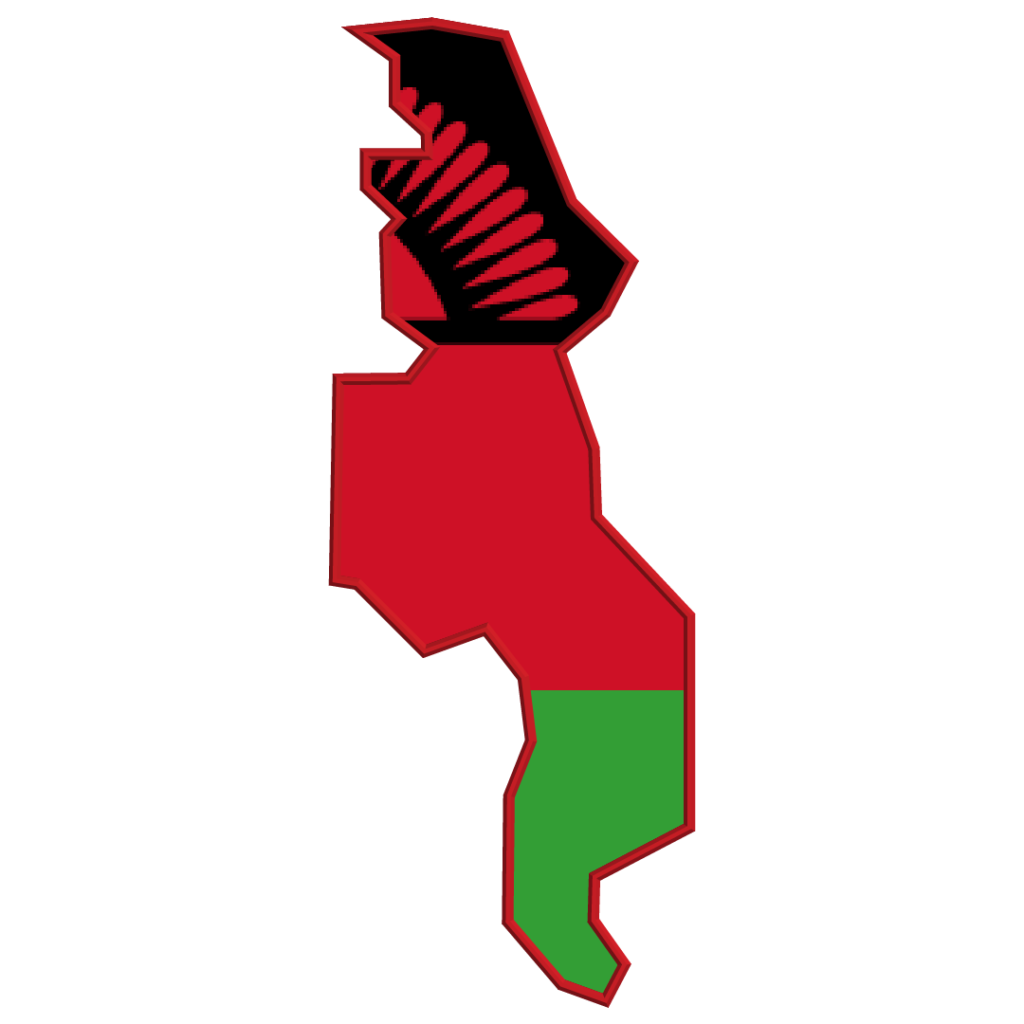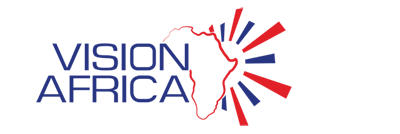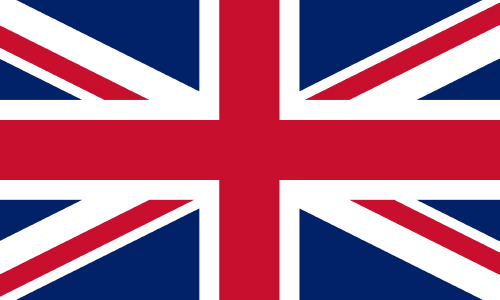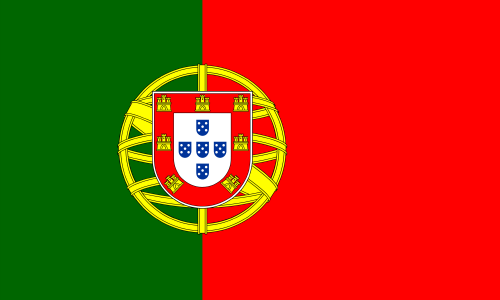
Malawi
|
Capital City
|
Lilongwe
|
|---|---|
|
Official Language
|
English
|
|
Largest Ethnic Group
|
25.2% Chewa
|
|
Religion
|
82.3% Christianity
|
|
Government
|
Unitary presidential republic
|
|
Established Republic
|
6 July 1966
|
|
Area
|
118,484 km2
|
|
Population
|
21,240,689 (2024 estimate)
|
|
Currency
|
Malawian Kwacha (MWK)
|
|
Time Zone
|
UTC+1 (Central Africa Time)
|
Malawi is another small landlocked country in southeastern Africa that shares its borders with Zambia to the west, Tanzania to the north and northeast, and Mozambique to the east, south, and southwest. The name “Malawi” means “flaming waters,” referring to the setting sun over Lake Malawi. Malawi stretches about 840 km from north to south and varies in width from 10 to 160 km and lies along the East African Rift Valley. It is endowed with spectacular highlands and extensive lakes. Lake Nyasa, known in Malawi as Lake Malawi, accounts for more than one-fifth of the country’s total area.
Malawi’s estimated population is around 20.41 million (as of 2022). Despite foreign capital inflows and development aid, Malawi faces challenges such as chronic malnutrition, high infant mortality rates, and poverty. Approximately 45.87% of the population is younger than 15 years of age.
Malawi’s economy is predominantly agricultural, with over 80% of the population living in rural areas. Most Malawians engage in cash-crop and subsistence agriculture making it vulnerable to external shocks, especially climate change. The country’s exports include tea, tobacco, and other agricultural products. Despite significant economic and structural reforms, Malawi remains one of the world’s least developed countries. The Malawi government launched the Malawi 2063 Vision, aiming to transform the country into a wealthy, self-reliant, industrialized upper-middle-income nation through agriculture commercialization, industrialization, and urbanization.
Lilongwe serves as the capital, while Blantyre is the seat of the country’s judiciary. Lilongwe has a population of 989,318 (2018 Census), which has grown significantly from 674,448 in 2008 and is situated in the central region of Malawi, near the borders with Mozambique and Zambia. Lilongwe serves as an important economic and transportation hub for central Malawi. The city has seen various development projects, including the construction of Lilongwe International Airport, rail connections, and industrial areas. Lilongwe’s population continues to experience rapid growth, with an annual growth rate of 4.3%
Since 2016 Vision Africa conducted several market research surveys in the country. Vision Africa has a dedicated interviewer team within the three provinces of the country. All field teams work directly for Vision Africa and have been trained by Vision Africa.
Vison Africa offers its full range of services to clients in the country which include:
Corporate Reputation Studies | Customer Satisfaction Surveys | Employee Engagement Survey | Employee Satisfaction Surveys | Employee Opinion Surveys | Product and Packaging Testing | New Product Testing| Advertising Campaign Testing| Retail Audits | Brand Health Trackers | Social Studies| Media Studies | Market Census | Usage and Attitude Surveys
Cornelius D'Alton
+264 81 122 3003

Malawi
|
Capital City
|
Lilongwe
|
|---|---|
|
Official Language
|
English
|
|
Largest Ethnic Group
|
25.2% Chewa
|
|
Religion
|
82.3% Christianity
|
|
Government
|
Unitary presidential republic
|
|
Established Republic
|
6 July 1966
|
|
Area
|
118,484 km2
|
|
Population
|
21,240,689 (2024 estimate)
|
|
Currency
|
Malawian Kwacha (MWK)
|
|
Time Zone
|
UTC+1 (Central Africa Time)
|
Malawi is another small landlocked country in southeastern Africa that shares its borders with Zambia to the west, Tanzania to the north and northeast, and Mozambique to the east, south, and southwest. The name “Malawi” means “flaming waters,” referring to the setting sun over Lake Malawi. Malawi stretches about 840 km from north to south and varies in width from 10 to 160 km and lies along the East African Rift Valley. It is endowed with spectacular highlands and extensive lakes. Lake Nyasa, known in Malawi as Lake Malawi, accounts for more than one-fifth of the country’s total area.
Malawi’s estimated population is around 20.41 million (as of 2022). Despite foreign capital inflows and development aid, Malawi faces challenges such as chronic malnutrition, high infant mortality rates, and poverty. Approximately 45.87% of the population is younger than 15 years of age.
Malawi’s economy is predominantly agricultural, with over 80% of the population living in rural areas. Most Malawians engage in cash-crop and subsistence agriculture making it vulnerable to external shocks, especially climate change. The country’s exports include tea, tobacco, and other agricultural products. Despite significant economic and structural reforms, Malawi remains one of the world’s least developed countries. The Malawi government launched the Malawi 2063 Vision, aiming to transform the country into a wealthy, self-reliant, industrialized upper-middle-income nation through agriculture commercialization, industrialization, and urbanization.
Lilongwe serves as the capital, while Blantyre is the seat of the country’s judiciary. Lilongwe has a population of 989,318 (2018 Census), which has grown significantly from 674,448 in 2008 and is situated in the central region of Malawi, near the borders with Mozambique and Zambia. Lilongwe serves as an important economic and transportation hub for central Malawi. The city has seen various development projects, including the construction of Lilongwe International Airport, rail connections, and industrial areas. Lilongwe’s population continues to experience rapid growth, with an annual growth rate of 4.3%
Since 2016 Vision Africa conducted several market research surveys in the country. Vision Africa has a dedicated interviewer team within the three provinces of the country. All field teams work directly for Vision Africa and have been trained by Vision Africa.
Vison Africa offers its full range of services to clients in the country which include:
Corporate Reputation Studies | Customer Satisfaction Surveys | Employee Engagement Survey | Employee Satisfaction Surveys | Employee Opinion Surveys | Product and Packaging Testing | New Product Testing| Advertising Campaign Testing| Retail Audits | Brand Health Trackers | Social Studies| Media Studies | Market Census | Usage and Attitude Surveys
Cornelius D'Alton
+264 81 122 3003

Malawi
|
Capital City
|
Lilongwe
|
|---|---|
|
Official Language
|
English
|
|
Largest Ethnic Group
|
25.2% Chewa
|
|
Religion
|
82.3% Christianity
|
|
Government
|
Unitary presidential republic
|
|
Established Republic
|
6 July 1966
|
|
Area
|
118,484 km2
|
|
Population
|
21,240,689 (2024 estimate)
|
|
Currency
|
Malawian Kwacha (MWK)
|
|
Time Zone
|
UTC+1 (Central Africa Time)
|
Malawi is another small landlocked country in southeastern Africa that shares its borders with Zambia to the west, Tanzania to the north and northeast, and Mozambique to the east, south, and southwest. The name “Malawi” means “flaming waters,” referring to the setting sun over Lake Malawi. Malawi stretches about 840 km from north to south and varies in width from 10 to 160 km and lies along the East African Rift Valley. It is endowed with spectacular highlands and extensive lakes. Lake Nyasa, known in Malawi as Lake Malawi, accounts for more than one-fifth of the country’s total area.
Malawi’s estimated population is around 20.41 million (as of 2022). Despite foreign capital inflows and development aid, Malawi faces challenges such as chronic malnutrition, high infant mortality rates, and poverty. Approximately 45.87% of the population is younger than 15 years of age.
Malawi’s economy is predominantly agricultural, with over 80% of the population living in rural areas. Most Malawians engage in cash-crop and subsistence agriculture making it vulnerable to external shocks, especially climate change. The country’s exports include tea, tobacco, and other agricultural products. Despite significant economic and structural reforms, Malawi remains one of the world’s least developed countries. The Malawi government launched the Malawi 2063 Vision, aiming to transform the country into a wealthy, self-reliant, industrialized upper-middle-income nation through agriculture commercialization, industrialization, and urbanization.
Lilongwe serves as the capital, while Blantyre is the seat of the country’s judiciary. Lilongwe has a population of 989,318 (2018 Census), which has grown significantly from 674,448 in 2008 and is situated in the central region of Malawi, near the borders with Mozambique and Zambia. Lilongwe serves as an important economic and transportation hub for central Malawi. The city has seen various development projects, including the construction of Lilongwe International Airport, rail connections, and industrial areas. Lilongwe’s population continues to experience rapid growth, with an annual growth rate of 4.3%
Since 2016 Vision Africa conducted several market research surveys in the country. Vision Africa has a dedicated interviewer team within the three provinces of the country. All field teams work directly for Vision Africa and have been trained by Vision Africa.
Vison Africa offers its full range of services to clients in the country which include:
Corporate Reputation Studies | Customer Satisfaction Surveys | Employee Engagement Survey | Employee Satisfaction Surveys | Employee Opinion Surveys | Product and Packaging Testing | New Product Testing| Advertising Campaign Testing| Retail Audits | Brand Health Trackers | Social Studies| Media Studies | Market Census | Usage and Attitude Surveys
Cornelius D'Alton
+264 81 122 3003




